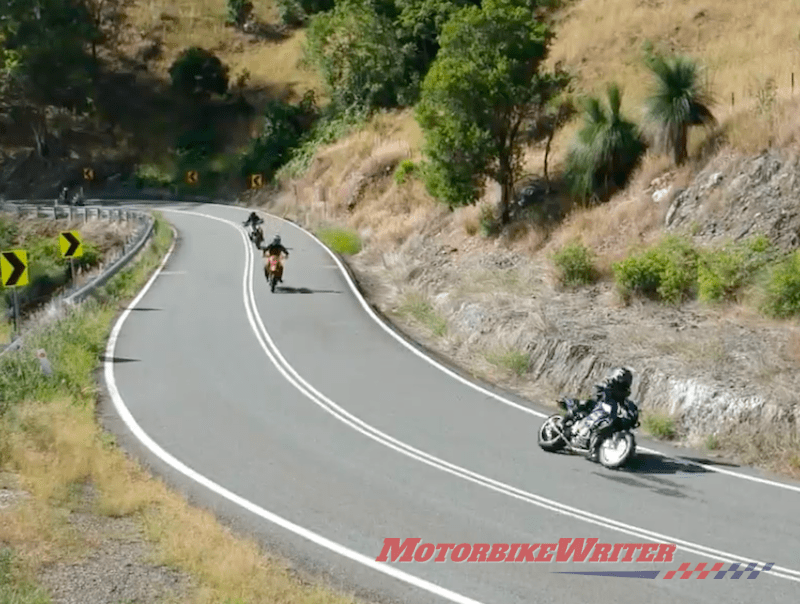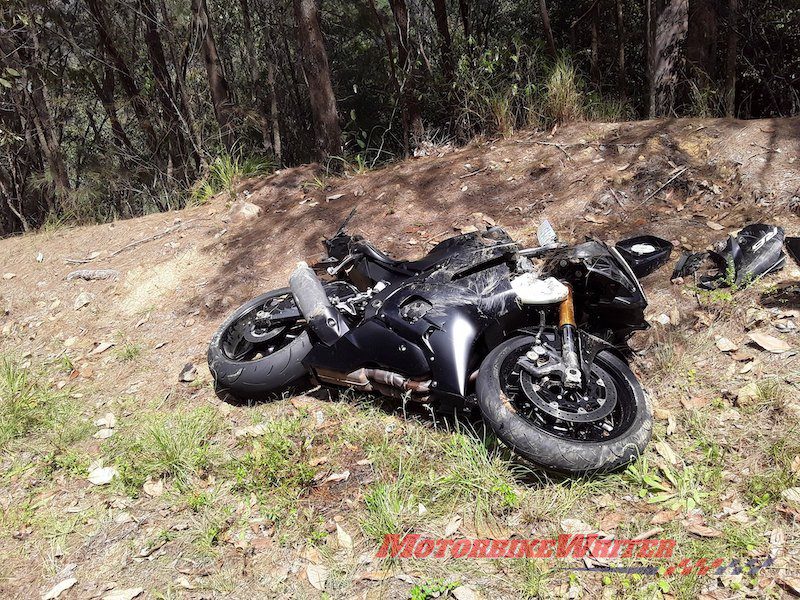More and more riders are being charged with negligent driving (riding) after a single-vehicle crash, says NSW traffic and criminal law specialist Chris Kalpage.
Our contributing lawyer has previously written articles about defending various charges and last time he addressed the issues arising out of dangerous driving and negligent driving causing death or grievous bodily harm.
He now tackles this increasing risk of a negligent driving charge for which penalties can be quite severe:

Negligent driving
The concept of negligence is whether the person charged was not riding in the manner of a reasonably prudent motorist, considering all the circumstances.
Often if police are called to a single-vehicle accident where the bike has come down there is a risk the rider will be charged with negligent driving.
Two cases I defended come to mind.
Case 1

One morning my client was riding his Aprilia RSV on the Old Pacific Highway, tipped into a corner at below the speed limit and lost his front end on slippery leaf mulch. You could substitute that for moss, oil, gravel from filling in potholes, or anything on the road surface.
He dragged himself to the Armco and sat down, his leg was broken. To his surprise, a tow truck and ambulance stopped to assist. As he was traveling to Gosford Hospital he heard over the radio that they had picked up the wrong accident victim, so they stopped at the next accident scene some kilometres from where he had crashed.
While the paramedics were assisting the other rider, a highway patrol officer at the second scene spoke to my client while he was in the back of the ambulance. He asked what had happened and my client explained about the leaf mulch. The officer further interviewed my client in hospital.
My client subsequently received an infringement for negligent driving which we defended.
The police officer’s evidence was that my client had told him he had lost his front wheel on leaf mulch. However, the officer said he attended the site and there was no leaf mulch, inferring that my client was riding with negligence.
In calling for the officer’s notebook in cross examination of him, it was clear the officer had noted my client indicated he had lost his front wheel suddenly on hitting the mulch. In cross-examination of the officer it was established that the notebook was the totality of the content of the discussion with my client. It was further conceded by the officer that my client had said nothing more.
It was conceded that there were many corners between where the officer saw my client in the ambulance and where the accident had occurred.
The obvious conclusion was that the officer could not correctly identify the exact corner of the crash and by inference had not attended the site as was stated. The officer’s questionable evidence was rejected, my client’s evidence favourably received and he was found not guilty.
Case 2

Another client was riding his Ducati 748 down the Oxley Highway when he hit a wedge of tarmac, possibly caused by heat forming a lip in the soft asphalt. His bike was knocked into gravel on the opposite side of the road.
Again my client had a broken leg and the ambulance was called. A regional highway patrol officer turned up at the site about 20 minutes later. Again, he had not seen how the accident occurred and had no evidence from witnesses, but formed the view that as an accident had occurred my client must have been traveling too fast.
At the hearing, the prosecutor agreed with me that the highway patrol officer could not provide expert post accident crash analysis. That is the remit of the specially trained police crash investigation unit. The case was adjourned so representations could be made.
However, the officer chose to press on with the case. Even though the magistrate allowed the evidence — which I believe should not have been — he took into account the officer’s lack of expertise and was prepared to accept my client’s evidence. He dismissed the prosecution.
Conclusion
A mere accident does not automatically mean that the rider was negligent. The prosecution needs to establish that you were driving or riding without the standard of care and attention reasonably expected of the ordinary prudent driver.
Even if you run into the back of a vehicle that suddenly stops, it does not mean your manner of driving was negligent.
I defended a retired motorcycle highway patrol officer with significant riding experience who ran into the back of a car because he had to apply emergency braking right where there was a sudden change in the road condition. He was acquitted at hearing.
So, if you have to brake suddenly and do it on a patch of diesel causing you to run into the car in front that may not constitute negligence. The court has to take into account all the circumstances of the case as embodied in the legislation, a part of which is printed below:
NSW ROAD TRANSPORT ACT 2013 – SECT 117
Negligent, furious or reckless driving
117 Negligent, furious or reckless driving
(cf STM Act, s 42)
(1) A person must not drive a motor vehicle on a road negligently.
(3) In considering whether an offence has been committed under this section, the court is to have regard to all the circumstances of the case, including the following:
(a) the nature, condition and use of the road on which the offence is alleged to have been committed,
(b) the amount of traffic that actually is at the time, or which might reasonably be expected to be, on the road,
(c) any obstructions or hazards on the road (including, for example, broken down or crashed vehicles, fallen loads and accident or emergency scenes).
(Editor’s note: This is a NSW law, but there are similar rules in most jurisdictions.)
This relates to the specific circumstances of the particular incident and this is one situation where every case is different. No two situations are alike so they require careful analysis. Don’t assess your case based on someone you know who had a similar situation and got a certain result, as you could be very wrong.
Disclaimer
This article is for reader information and interest only and is based on New South Wales law. It is not intended to be comprehensive, and does not constitute and must not be relied on as legal advice.
Please be aware that every case is different and the matters raised may not be of specific relevance to your situation but may have a general application. You must seek specific advice tailored to your circumstances. Chris is happy to talk to anyone needing clarification. He can be contacted on 0418 211074.


